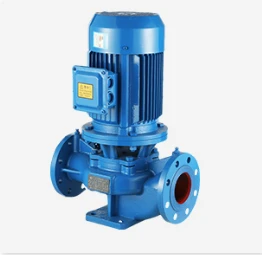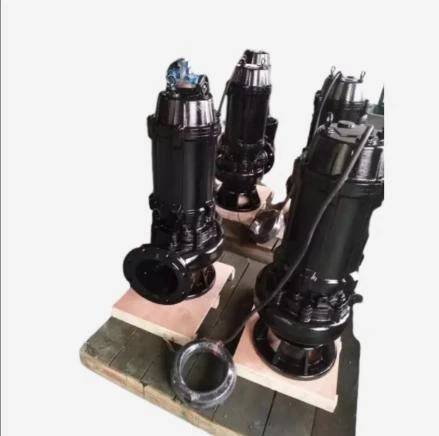Lithuanian
- Afrikaans
- Albanian
- Amharic
- Arabic
- Armenian
- Azerbaijani
- Basque
- Belarusian
- Bengali
- Bosnian
- Bulgarian
- Catalan
- Cebuano
- Corsican
- Croatian
- Czech
- Danish
- Dutch
- English
- Esperanto
- Estonian
- Finnish
- French
- Frisian
- Galician
- Georgian
- German
- Greek
- Gujarati
- Haitian Creole
- hausa
- hawaiian
- Hebrew
- Hindi
- Miao
- Hungarian
- Icelandic
- igbo
- Indonesian
- irish
- Italian
- Japanese
- Javanese
- Kannada
- kazakh
- Khmer
- Rwandese
- Korean
- Kurdish
- Kyrgyz
- Lao
- Latin
- Latvian
- Lithuanian
- Luxembourgish
- Macedonian
- Malgashi
- Malay
- Malayalam
- Maltese
- Maori
- Marathi
- Mongolian
- Myanmar
- Nepali
- Norwegian
- Norwegian
- Occitan
- Pashto
- Persian
- Polish
- Portuguese
- Punjabi
- Romanian
- Russian
- Samoan
- Scottish Gaelic
- Serbian
- Sesotho
- Shona
- Sindhi
- Sinhala
- Slovak
- Slovenian
- Somali
- Spanish
- Sundanese
- Swahili
- Swedish
- Tagalog
- Tajik
- Tamil
- Tatar
- Telugu
- Thai
- Turkish
- Turkmen
- Ukrainian
- Urdu
- Uighur
- Uzbek
- Vietnamese
- Welsh
- Bantu
- Yiddish
- Yoruba
- Zulu
Telephone: +86 13120555503
Email: frank@cypump.com
Bir . 04, 2025 19:36 Back to list
Heavy-Duty Sludge Pump Submersible for Wastewater Removal
- Sludge challenges and pumping fundamentals
- Critical technical specifications explained
- Performance comparison of leading manufacturers
- Tailored solutions for industrial applications
- Preventive maintenance protocols
- Application case studies with quantified results
- Industry evolution and technology advancements

(sludge pump submersible)
The Critical Role of Submersible Sludge Pumps in Industrial Operations
Modern industries generate over 350 million tons of sludge annually worldwide, creating complex handling challenges across wastewater facilities, mining operations, and industrial processing plants. Submersible sludge pumps deliver essential solutions for these high-viscosity, abrasive materials, operating fully submerged in collection tanks, lagoons, and processing vessels. Unlike standard wastewater pumps, these specialized units feature hardened impellers that process solids concentrations exceeding 25% while maintaining flow rates between 15-1500 m³/h. The fully enclosed motor housing prevents liquid intrusion during extended operation cycles while advanced sealing technologies maintain operational integrity even when processing media with pH levels from 2 to 13.
Technical Specifications for Optimal Performance
Superior hydraulic designs incorporate semi-open impellers reinforced with 26-30% chromium cast iron for extended wear resistance, accommodating solids passage up to 65mm diameter without clogging. Power ratings typically span 2.2-90 kW with discharge diameters ranging from 25-150mm, delivering pressures sufficient to lift sludge 8-80 meters vertically. Innovative cooling systems maintain motor temperatures below 80°C even when handling 60°C materials at maximum viscosity. Dual mechanical seals featuring silicon carbide faces operate in oil-filled chambers, doubling operational lifespans to 18,000-22,000 hours. Operators should verify NPSH requirements between 2-4 meters to prevent cavitation with high-density slurries.
| Manufacturer | Max Solids (%) | Pressure (bar) | Temp Range (°C) | Sealing System | Corrosion Resistance |
|---|---|---|---|---|---|
| Xylem | 32% | 14 | -15 to 60 | Double cartridge | Duplex steel |
| Sulzer | 28% | 12 | -20 to 70 | Tandem seals | Super duplex |
| KSB | 26% | 10 | -10 to 55 | Lip seal + mechanical | Ni-Resist |
| Tsurumi | 35% | 9 | -10 to 50 | Double mechanical | High-chrome cast |
Customization Capabilities for Industry-Specific Requirements
Processing facilities require bespoke configurations to address unique operational parameters. Food manufacturing plants implement ATEX-certified explosion-proof motors when pumping volatile organic sediment, while mining operations utilize 15mm rubber lining for coarse mineral slurries. Recent pharmaceutical installations feature CIP (clean-in-place) compatible designs with smooth internal surfaces and polished stainless steel material (AISI 316L) to meet FDA sanitation standards. Municipal water authorities now deploy smart pumps with IoT sensors that measure viscosity in real-time, automatically adjusting impeller speed through integrated VFD controls to maintain constant flow rates despite sludge density variations.
Maintenance Protocols Ensuring Operational Continuity
Preventive maintenance extends mean time between failures by 40-60% compared to reactive servicing. Quarterly inspections should verify seal chamber integrity using pressure decay testing while monitoring vibration levels below 5mm/s RMS. Annual oil analysis checks for moisture intrusion above 200ppm, signaling impending seal failure. Abrasive wear patterns on impeller vanes necessitate replacement when material thickness reduces beyond 15% of original specifications. Facilities processing mineral sludge implement monthly wear ring clearance checks maintaining 0.3-0.5mm tolerances to preserve hydraulic efficiency. Post-operation cleaning procedures require special attention when handling petroleum sludge to prevent hazardous material accumulation in motor cooling jackets.
Documented Applications with Quantified Performance Metrics
A municipal wastewater plant in Birmingham upgraded their biological sludge handling system with five 55kW submersible units, reducing energy consumption by 38% while increasing throughput capacity to 180m³/h. Post-implementation data showed reduction in unscheduled downtime from 42 hours monthly to 8 hours. In copper mining operations, Chilean operators reported a 67% improvement in wear component lifespan after switching to specialized rubber-lined models handling abrasive tailings at 27% solids concentration. A notable case involved Petrochemical Partners Ltd., which resolved frequent pump failures by implementing customized duplex stainless steel models with hardened cutter systems for viscous hydrocarbon sludge, reducing maintenance costs by £115,000 annually while processing material at 90°C.
The Evolving Landscape of Submersible Pump Technology for Sludge Applications
Innovative developments continue to enhance submersible sludge pump capabilities. Current R&D focuses on nanoceramic coatings that reduce wear rates by 80% in high-velocity applications, while IoT integration enables remote diagnosis of impeller imbalance at 15% degradation level. Emerging magnetic drive designs eliminate seal vulnerabilities entirely, particularly beneficial when processing hazardous medical or radioactive waste. The latest hydrodynamic optimizations increase solids passage capacity to 70mm diameter while reducing hydraulic losses by 18% through computational fluid dynamics refinement. Regulatory requirements increasingly mandate secondary containment systems with leakage sensors rated for ATEX Zone 1 environments when handling flammable materials. Waste-to-energy conversion efficiencies have improved considerably, with some modern units processing sludge directly into anaerobic digesters while maintaining ideal flow characteristics for methane production.

(sludge pump submersible)
FAQS on sludge pump submersible
以下为围绕核心关键词创建的5组英文FAQs(使用HTML富文本格式):Q: What is a submersible sludge pump used for?
A: A submersible sludge pump is designed to handle thick, abrasive slurries and sewage with high solid content. It operates fully submerged, making it ideal for deep sumps, ponds, and industrial wastewater. These pumps efficiently transfer viscous materials where drainage is challenging.
Q: How to choose the right submersible pump for sludge applications?
A: Prioritize pumps with hardened impellers and agitators to grind solids. Ensure the horsepower matches viscosity requirements (e.g., 5-30HP for industrial sludge). Verify certifications like explosion-proofing for hazardous environments like oil refineries.
Q: Can a sludge pump submersible handle corrosive chemicals?
A: Yes, select models with corrosion-resistant materials like cast iron or stainless steel housings. Specialty seals and epoxy-coated components prevent acid/alkali degradation. Always check chemical compatibility charts for specific media like petrochemical waste.
Q: What maintenance does a submersible sludge pump require?
A: Inspect seals and abrasion-prone parts monthly. Clean intake screens after heavy use to prevent clogs. Annually replace worn agitator blades and perform oil analysis on gear mechanisms.
Q: Why choose a submersible pump over standard models for sludge?
A: Submersible units eliminate priming issues and reduce clogging through direct contact with sludge. Their sealed motors withstand submersion where dry pumps fail. Built-in agitators enhance dewatering efficiency in applications like mining tailings ponds.
-
High-Performance Septic Tank Pumps for Reliable Wastewater Management
NewsJul.26,2025
-
High Efficiency Horizontal Split Case Pump for Industrial Use
NewsJul.25,2025
-
Flue Gas Desulfurization Pump for Efficient Chemical Processing
NewsJul.24,2025
-
High-Efficiency Axial Flow Pump for Water Transfer & Irrigation
NewsJul.23,2025
-
High-Efficiency Horizontal Split Case Pump for Industrial Use
NewsJul.22,2025
-
Reliable Septic Tank Pumps | Durable & Clog-Resistant
NewsJul.22,2025










